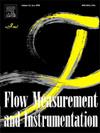Effects of valve disc truss on hydrodynamic torque of huge butterfly valve
IF 2.3
3区 工程技术
Q2 ENGINEERING, MECHANICAL
引用次数: 0
Abstract
The butterfly valve plays an important role in water transportation and flow regulation in pipeline systems. As huge butterfly valves are developed, the valve disc is more prone to deformation under hydrodynamic torque, which puts forward higher requirements for actuators and valve disc design. The valve disc with truss offers practical advantages like high compressive strength, low flow resistance, large flow area and energy efficiency. This paper investigates the effects of valve disc truss on flow characteristics and hydrodynamic torque of huge butterfly valve using a sliding grid model. Experimental verification of flow rate and hydrodynamic torque confirms the accuracy and feasibility of numerical simulations. The results show that uneven pressure distribution and pressure difference at different rotating angles are causes of hydrodynamic torque. Truss arrangement and rotating direction affect the angle corresponding to maximum hydrodynamic torque. Four inclined trusses with an angle below 55° is the optimal disc structure and a lower flow velocity with faster closing speed is beneficial for reducing energy loss while ensuring overall safety performance. This work provides significant reference value for the structural optimization of huge butterfly valve and actuator design.
阀板桁架对大型蝶阀动液力矩的影响
蝶阀在管道系统的输水和流量调节中起着重要的作用。随着大型蝶阀的发展,阀板在流体动力扭矩作用下更容易发生变形,这对执行机构和阀板设计提出了更高的要求。桁架阀瓣具有抗压强度高、流阻小、通流面积大、节能等实用优点。采用滑动网格模型研究了阀瓣桁架对大型蝶阀流动特性和流体动力扭矩的影响。流量和动液扭矩的实验验证了数值模拟的准确性和可行性。结果表明,压力分布不均匀和不同旋转角度的压力差是产生动液扭矩的主要原因。桁架布置和旋转方向影响最大流体动力扭矩对应的角度。4个倾角小于55°的斜桁架是阀瓣的最佳结构,较低的流速和较快的关闭速度有利于在保证整体安全性能的同时减少能量损失。该工作对大型蝶阀的结构优化和执行机构的设计具有重要的参考价值。
本文章由计算机程序翻译,如有差异,请以英文原文为准。
求助全文
约1分钟内获得全文
求助全文
来源期刊

Flow Measurement and Instrumentation
工程技术-工程:机械
CiteScore
4.30
自引率
13.60%
发文量
123
审稿时长
6 months
期刊介绍:
Flow Measurement and Instrumentation is dedicated to disseminating the latest research results on all aspects of flow measurement, in both closed conduits and open channels. The design of flow measurement systems involves a wide variety of multidisciplinary activities including modelling the flow sensor, the fluid flow and the sensor/fluid interactions through the use of computation techniques; the development of advanced transducer systems and their associated signal processing and the laboratory and field assessment of the overall system under ideal and disturbed conditions.
FMI is the essential forum for critical information exchange, and contributions are particularly encouraged in the following areas of interest:
Modelling: the application of mathematical and computational modelling to the interaction of fluid dynamics with flowmeters, including flowmeter behaviour, improved flowmeter design and installation problems. Application of CAD/CAE techniques to flowmeter modelling are eligible.
Design and development: the detailed design of the flowmeter head and/or signal processing aspects of novel flowmeters. Emphasis is given to papers identifying new sensor configurations, multisensor flow measurement systems, non-intrusive flow metering techniques and the application of microelectronic techniques in smart or intelligent systems.
Calibration techniques: including descriptions of new or existing calibration facilities and techniques, calibration data from different flowmeter types, and calibration intercomparison data from different laboratories.
Installation effect data: dealing with the effects of non-ideal flow conditions on flowmeters. Papers combining a theoretical understanding of flowmeter behaviour with experimental work are particularly welcome.
 求助内容:
求助内容: 应助结果提醒方式:
应助结果提醒方式:


